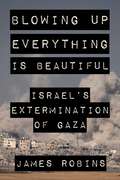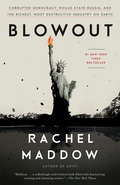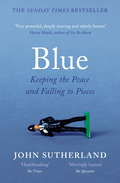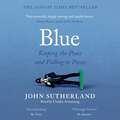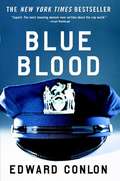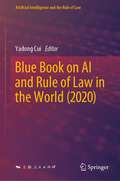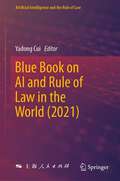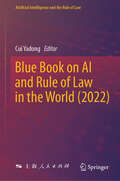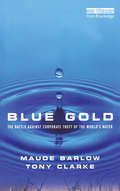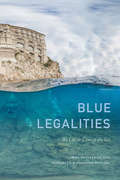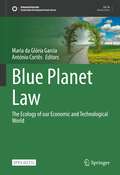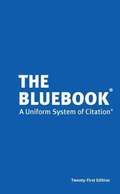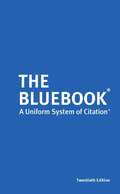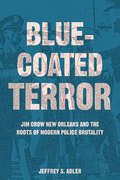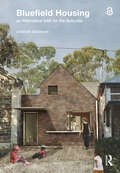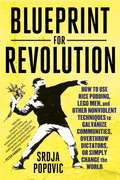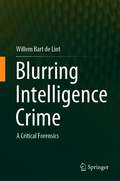- Table View
- List View
Blowing Up Everything Is Beautiful: Israel's Extermination of Gaza
by James RobinsTHEY TOLD YOU WHAT THEY WERE DOING WHILE THEY DID IT &“Blow up and flatten everything . . .&” These chilling words, said by Amichai Eliyahu, a minister in the Israeli government, have been a message to the world and the people of Gaza: destroying everything—homes, businesses, lives—is justified. Even beautiful. For fifteen months and in full view of the world, the state of Israel trapped more than two million people in a tiny strip of land and unleashed vengeance on them. The Palestinians endured a nightmare—bombed from the air, targeted by soldiers, their hospitals destroyed—and, as they are cut off from the rest of the world, the nightmare continues.Blowing Up Everything is Beautiful is a searing indictment of the brutality and atrocities inflicted on the Palestinians of Gaza and the collaboration of powerful nations in their murder. With forensic detail and the forceful arguments of a prosecutor, James Robins details how the ongoing attempt to annihilate Gaza became the major crime of our age—and a turning point. What happens when the moral regime of international law and human rights that protect the oppressed fails? Blowing Up Everything is Beautiful reveals a bold, radical, and independent new voice that offers a powerful reminder: all crimes cry out for justice, and if that justice fails, the crimes will no doubt happen again.
Blowout: Corrupted Democracy, Rogue State Russia, and the Richest, Most Destructive Industry on Earth
by Rachel MaddowBig Oil and Gas Versus Democracy—Winner Take All <P><P>In 2010, the words “earthquake swarm” entered the lexicon in Oklahoma. That same year, a trove of Michael Jackson memorabilia—including his iconic crystal-encrusted white glove—was sold at auction for over $1 million to a guy who was, officially, just the lowly forestry minister of the tiny nation of Equatorial Guinea. And in 2014, Ukrainian revolutionaries raided the palace of their ousted president and found a zoo of peacocks, gilded toilets, and a floating restaurant modeled after a Spanish galleon. <P><P>Unlikely as it might seem, there is a thread connecting these events, and Rachel Maddow follows it to its crooked source: the unimaginably lucrative and equally corrupting oil and gas industry. With her trademark black humor, Maddow takes us on a switchback journey around the globe, revealing the greed and incompetence of Big Oil and Gas along the way, and drawing a surprising conclusion about why the Russian government hacked the 2016 U.S. election. She deftly shows how Russia’s rich reserves of crude have, paradoxically, stunted its growth, forcing Putin to maintain his power by spreading Russia’s rot into its rivals, its neighbors, the West’s most important alliances, and the United States. <P><P>Chevron, BP, and a host of other industry players get their star turn, most notably ExxonMobil and the deceptively well-behaved Rex Tillerson. The oil and gas industry has weakened democracies in developed and developing countries, fouled oceans and rivers, and propped up authoritarian thieves and killers. But being outraged at it is, according to Maddow, “like being indignant when a lion takes down and eats a gazelle. You can’t really blame the lion. It’s in her nature.” <P><P>Blowout is a call to contain the lion: to stop subsidizing the wealthiest businesses on earth, to fight for transparency, and to check the influence of the world’s most destructive industry and its enablers. The stakes have never been higher. As Maddow writes, “Democracy either wins this one or disappears.” <P><P><b>A New York Times Bestseller</b>
Blue: A Memoir – Keeping the Peace and Falling to Pieces
by John SutherlandA Sunday Times top-five bestseller'This is a remarkable book . . . profound and deeply moving . . . It has as much to tell us about mental illness as it does about policing' Alastair StewartJohn Sutherland joined the Met in 1992, having dreamed of being a police officer since his teens. Rising quickly through the ranks, he experienced all that is extraordinary about a life in blue: saving lives, finding the lost, comforting the broken and helping to take dangerous people off the streets. But for every case with a happy ending, there were others that ended in desperate sadness, and in 2013 John suffered a major breakdown.Blue is his memoir of crime and calamity, of adventure and achievement, of friendship and failure, of serious illness and slow recovery. With searing honesty, it offers an immensely moving and personal insight into what it is to be a police officer in Britain today.
Blue: A Memoir Keeping the Peace and Falling to Pieces
by John SutherlandA Sunday Times top-five bestseller'This is a remarkable book . . . profound and deeply moving . . . It has as much to tell us about mental illness as it does about policing' Alastair StewartJohn Sutherland joined the Met in 1992, having dreamed of being a police officer since his teens. Rising quickly through the ranks, he experienced all that is extraordinary about a life in blue: saving lives, finding the lost, comforting the broken and helping to take dangerous people off the streets. But for every case with a happy ending, there were others that ended in desperate sadness, and in 2013 John suffered a major breakdown.Blue is his memoir of crime and calamity, of adventure and achievement, of friendship and failure, of serious illness and slow recovery. With searing honesty, it offers an immensely moving and personal insight into what it is to be a police officer in Britain today.
Blue: A Memoir – Keeping the Peace and Falling to Pieces
by John SutherlandA searingly honest memoir of life, policing and falling apart'Every contact leaves a trace'John Sutherland joined the Met in 1992, having dreamed of being a police officer since his teens. Rising quickly through the ranks, and compelled by the opportunity to make a real difference to people's lives, he worked across the capital, experiencing first-hand the enormous satisfaction as well as the endless trauma that a life in blue can bring.There were remarkable, career-defining moments: commanding armed sieges, saving lives and helping to take dangerous people off the streets. But for every case with a happy ending, there were others that ended in desperate sadness.In early 2013, John suffered a major breakdown and consequent battle with crippling depression. After a career spent racing to be the first at the scene of crimes and catastrophes, he found himself in pieces, unable to put one foot in front of the other.Blue is a memoir of crime and calamity, of adventure and achievement, of friendship and failure, of laughter and loss, of the best and the worst of humanity, of serious illness and slow recovery. With searing honesty, it offers an immensely moving and personal insight into what it is to be a police officer in Britain today.
Blue Blood
by Edward ConlonEdward Conlon's Blue Blood is an ambitious and extraordinary work of nonfiction about what it means to protect, to serve, and to defend among the ranks of New York's finest. This is an anecdotal history of New York as experienced through its police force, and depicts a portrait of the teeming street life of the city in all its horror and splendor. It is a story about police politics, fathers and sons, partners who become brothers, old ghosts and undying legacies.
Blue Book on AI and Rule of Law in the World (Artificial Intelligence and the Rule of Law)
by Yadong CuiThis book focuses on the development of artificial intelligence and rule of law in the current world. It covers topics such as AI strategy, policy, law, theoretical research, and practical application. Through an in-depth analysis and thorough evaluation, this book provides a more objective, fair, accurate and comprehensive report. The purpose is to lead the AI and rule of law research and create an AI and rule of law environment which is conducive to the construction of AI and rule of law system. In particular, it aims to play an active role in promoting the establishment of legal systems, policy systems, and codes of ethics that are compatible with the innovative development of AI, thus facilitating the implementation of a new generation of AI development strategies, and ensuring the safe, reliable, controllable, healthy, and sustainable development of AI.
Blue Book on AI and Rule of Law in the World (Artificial Intelligence and the Rule of Law)
by Yadong CuiThis book focuses on the development of artificial intelligence and rule of law in the world, by collecting and summarizing the information about the development of artificial intelligence and rule of law in China and the world, covering topics like AI strategy, policy, law, theoretical research and practical application, etc. It makes an in-depth analysis so as to provide an objective, fair and accurate report. The purpose is to promote the study of AI and law, promote the construction of AI and rule of law system and create an AI and rule of law environment. In particular, it aims to play an active role in promoting the establishment of legislative norms, legal systems, policy systems and ethical norms that are compatible with the innovative development of AI, promoting the implementation of a new generation of national AI development strategies, ensuring the safe, reliable, controllable, healthy and sustainable development of AI. It is hoped that this book may provide useful reference for researchers of AI and law.
Blue Book on AI and Rule of Law in the World (Artificial Intelligence and the Rule of Law)
by Cui YadongThis book focuses on the development of artificial intelligence and rule of law in the world, by collecting and summarizing the information about the development of artificial intelligence and rule of law in China and the world, covering topics like AI strategy, policy, law, theoretical research, practical application, etc. It makes an in-depth analysis so as to provide an objective, fair, and accurate report. The purpose is to promote the study of AI and law, promote the construction of AI and rule of law system, and create an AI and rule of law environment. In particular, it aims to play an active role in promoting the establishment of legislative norms, legal systems, policy systems, and ethical norms that are compatible with the innovative development of AI, promoting the implementation of a new generation of national AI development strategies and ensuring the safe, reliable, controllable, healthy, and sustainable development of AI. It is hoped that this book provides a useful reference for researchers of AI and law.
Blue Extinction in Literature, Art, and Culture (Palgrave Studies in Animals and Literature)
by Vera Fibisan Rachel MurrayBlue Extinction in Literature, Culture, and Art examines literary and cultural representations of aquatic biodiversity loss, bringing together critical perspectives from the blue humanities and extinction studies. It demonstrates the affordances, as well as the limitations, of literary and artistic forms in exposing the plight of aquatic organisms, drawing attention to the social, political, and economic structures that are contributing to their destruction. Together, the essays in this collection demonstrate how literature and art can challenge dominant cultural conceptions and lingering misconceptions surrounding aquatic biodiversity loss, offering new ways of relating to species ranging from whales to oysters.
Blue Gold: The Battle Against Corporate Theft of the World's Water
by Maude Barlow Tony ClarkeInternational tensions around water are rising in many of the world's most volatile regions. The policy recipe pursued by the West, and imposed on governments elsewhere, is to pass control over water to private interests, which simply accelerates the cycle of inequality and deprivation. California, as well as China, South Africa, Mexico and countries on every continent already face a crisis. This book exposes the enormity of the problem, the dangers of the proposed solution and the alternative, which is to recognize access to water as a fundamental human right, not dependent on ability to pay.
Blue Legalities: The Life and Laws of the Sea
by Irus Braverman Elizabeth R. Johnson Eds.The ocean and its inhabitants sketch and stretch our understandings of law in unexpected ways. Inspired by the blue turn in the social sciences and humanities, Blue Legalities explores how regulatory frameworks and governmental infrastructures are made, reworked, and contested in the oceans. Its interdisciplinary contributors analyze topics that range from militarization and Maori cosmologies to island building in the South China Sea and underwater robotics. Throughout, Blue Legalities illuminates the vast and unusual challenges associated with regulating the turbulent materialities and lives of the sea. Offering much more than an analysis of legal frameworks, the chapters in this volume show how the more-than-human ocean is central to the construction of terrestrial institutions and modes of governance. By thinking with the more-than-human ocean, Blue Legalities questions what we think we know—and what we don&’t know—about oceans, our earthly planet, and ourselves. Contributors. Stacy Alaimo, Amy Braun, Irus Braverman, Holly Jean Buck, Jennifer L. Gaynor, Stefan Helmreich, Elizabeth R. Johnson, Stephanie Jones, Zsofia Korosy, Berit Kristoffersen, Jessica Lehman, Astrida Neimanis, Susan Reid, Alison Rieser, Katherine G. Sammler, Astrid Schrader, Kristen L. Shake, Phil Steinberg
Blue on Blue: An Insider's Story of Good Cops Catching Bad Cops
by Gordon Dillow Charles CampisiOne of the most authentic and consistently illuminating portraits of police work ever, Blue on Blue describes the fascinating inner workings of the world’s largest police force and Chief Charles Campisi’s unprecedented two decades putting bad cops behind bars.From 1996 through 2014 Charles Campisi headed NYPD’s Internal Affairs Bureau, working under four police commissioners and gaining a reputation as hard-nosed and incorruptible. When he retired, only one man on the 36,000-member force had served longer. During Campisi’s IAB tenure, the number of New Yorkers shot, wounded, or killed by cops every year declined by ninety percent, and the number of cops failing integrity tests shrank to an equally startling low. But to achieve those exemplary results, Campisi had to triple IAB’s staff, hire the very best detectives, and put the word out that bad apples wouldn’t be tolerated. While early pages of Campisi’s absorbing account bring us into the real world of cops, showing, for example, the agony that every cop suffers when he fires his gun, later pages spotlight a harrowing series of investigations that tested IAB’s capacities, forcing detectives to go undercover against cops who were themselves undercover, to hunt down criminals posing as cops, and to break through the “blue wall of silence” to verify rare—but sometimes very real—cases of police brutality. Told in an edge-of-the-seat way by a born storyteller, Blue on Blue puts us in the scene, allowing us to listen in on wiretaps and feel the adrenaline rush of drawing in the net. It also reveals new threats to the force, such as the possibility of infiltration by terrorists. Ultimately, the book inspires awe for the man who, for almost two decades, was entrusted with the job of making sure the words “New York’s Finest” never ring hollow. A truly revelatory account, Blue on Blue will forever change the way you view police work.
Blue Planet Law: The Ecology of our Economic and Technological World (Sustainable Development Goals Series)
by Maria da Glória Garcia António CortêsBlue Planet Law is the global and future-oriented environmental law that is necessary to face the global environmental crisis in the Anthropocene, assuming especially the link between climate action (SDG 13) and ocean sustainability (SDG 14). This open access book focuses on means of overcoming global environmental problems such as climate change, ocean degradation and biodiversity loss and the consequent risks for human life, health, food and wellbeing. It explores how environmental law, at the international, European and national levels, might set economic and technological development on a more sustainable path. Law must engage in dialogue with other areas such as philosophy, economics, ecology, and biology. This book highlights protection of the climate and the oceans and sustainable use of natural resources, through new policies, economies and technologies, including biotechnology, with a view to the preservation of life, health, food and a healthy environment for the present and future generations. The book may be seen as a contribution to the UN Sustainable Development Goals 13 and 14 and a tribute to the Declaration of the United Nations Conference on the Human Environment, also known as the Stockholm Conference (1972), on its 50th Anniversary.
Blue Revolution: Integrated Land and Water Resources Management
by Ian Calder'Blue Revolution upturns some environmental applecarts - not for the hell of it, but so we can manage our environment better.' Fred Pearce, New Scientist This updated and revised edition of The Blue Revolution provides further evidence of the need to integrate land management decision-making into the process of integrated water resources management. It presents the key issues involved in finding the balance between the competing demands for land and water: for food and other forms of economic production, for sustaining livelihoods, and for conservation, amenity, recreation and the requirements of the environment. It also advocates the means and methodologies for addressing them. A new chapter, 'Policies, Power and Perversity,' describes the perverse outcomes that can result from present, often myth-based, land and water policies which do not consider these land and water interactions. New research and case studies involving ILWRM concepts are presented for the Panama Canal catchments and in relation to afforestation proposals for the UK Midlands.
The Bluebook: A Uniform System of Citation
by Editors of the Columbia Law Review the Harvard Law Review the University of Pennsylvania Law Review and The Yale Law JournalThe Bluebook provides the comprehensive, standardized citation system for the legal profession in the United States. This edition of The Bluebook retains the same basic approach to legal citation established by its predecessors. Some citation forms have been expanded, reduced, or modified from previous editions. This edition focuses on making The Bluebook more practical for modern legal practice.
The Bluebook: A Uniform System Of Citation, 19th edition
by Columbia Law ReviewGenerations of law students, lawyers, scholars, judges, and other legal professionals have relied on The Bluebook's unique system of citation in their writing. In a diverse and rapidly changing legal profession, The Bluebook continues to provide a systematic method by which members of the profession communicate important information to one another about the sources and legal authorities upon which they rely in their work.
The Bluebook: A Uniform System of Citation (Eighteenth Edition)
by Harvard Law Review University of Pennsylvania Law Review Yale Law Journal Columbia Law ReviewThis edition of The Bluebook retains the same basic approach to legal citation established by its predecessors. The Bluepages, new to the Eighteenth Edition, is a how-to guide providing easy-to-comprehend instruction for the everyday citation needs of first-year law students, summer associates, law clerks, practicing lawyers, and other legal professionals.
The Bluebook: A Uniform System of Citation (Twentieth Edition)
by the editors of the Columbia Law Review the Harvard Law Review the University of Pennsylvania Law Review The Yale Law JournalThe Bluebook: A Uniform System of Citation, is a style guide that prescribes the most widely used legal citation system in the United States.
The Bluebook (Twenty-First Edition): A Uniform System Of Citation
by The Harvard Law Review AssociationThe Twenty-First Edition of The Bluebook: A Uniform System of Citation, a definitive guide for legal citation in the United States, compiled by the editors of the Columbia Law Review, Harvard Law Review, University of Pennsylvania Law Review, and Yale Law Journal. It provides a standardized system of citation used by law students, lawyers, scholars, judges, and other legal professionals. The Bluebook is divided into three parts: the Bluepages, which serve as a basic guide for legal citation; the Whitepages, which contain detailed rules for citation and style; and a series of tables to be used in conjunction with the rules. The document highlights changes in citation rules, offers guidance on citing various legal authorities, and includes updates for modern legal practices. The edition emphasizes practicality, ease of use, and the importance of accurate citation to facilitate the efficient location of legal sources.
Bluecoated Terror: Jim Crow New Orleans and the Roots of Modern Police Brutality
by Jeffrey S. AdlerA searing chronicle of how racist violence became an ingrained facet of law enforcement in the United States. Too often, scholars and pundits argue either that police violence against African Americans has remained unchanged since the era of slavery or that it is a recent phenomenon and disconnected from the past. Neither view is accurate. In Bluecoated Terror, Jeffrey S. Adler draws on rich archival accounts to show, in narrative detail, how racialized police brutality is part of a larger system of state oppression with roots in the early twentieth-century South, particularly New Orleans. Wide racial differentials in the use of lethal force and beatings during arrest and interrogation emerged in the 1930s and 1940s. Adler explains how race control and crime control blended and blurred during this era, when police officers and criminal justice officials began to justify systemic violence against Black people as a crucial—and legal—tool for maintaining law and order. Bluecoated Terror explores both the rise of these law-enforcement trends and their chilling resilience, providing critical context for recent horrific police abuses as the ghost of Jim Crow law enforcement continues to haunt the nation.
Bluefield Housing as Alternative Infill for the Suburbs
by Damian MadiganSuburbanised cities share a common dilemma: how to transition to more densely populated and socially connected urban systems while retaining low-rise character, avoiding gentrification, and opening neighbourhoods to more diverse housing choices. Bluefield Housing offers a new land definition and co-located infill model addressing these concerns, through describing and deploying the types of ad-hoc modifications that have been undertaken in the suburbs for decades. Extending green-, brown-, and greyfield definitions, it provides a necessary middle ground between the ‘do nothing’ attitude of suburban preservation and the ‘do everything’ approach of knock-down-rebuild regeneration. An adjunct to ‘missing middle’ and subdivision densification models, with a focus on co-locating homes on small lots, Bluefield Housing presents a unified design approach to suburban infill: retrofitting original houses, retaining and enhancing landscape and urban tree canopies, and delivering additional homes as low-rise additions and backyard homes suited to the increasingly complex make-up of our households. Extensively illustrated by the author with engaging architectural design studies, Damian Madigan describes how existing quirks of suburban housing can prompt new forms of infill, explains why a new suburban densification model is not only necessary but can be made desirable for varied stakeholders, and charts a path towards the types of statutory and market triggers required to make bluefield housing achievable. Using Australian housing as an example but addressing universal concerns around neighbourhood character, demographic needs, housing diversity, dwelling flexibility, and landscape amenity, Bluefield Housing offers innovative suburban infill ideas for policy makers, planners, architects, researchers and students of housing and design studies, and for those with a stake in the future of the suburbs.
Bluefield Housing as Alternative Infill for the Suburbs
by Damian MadiganSuburbanised cities share a common dilemma: how to transition to more densely populated and socially connected urban systems while retaining low-rise character, avoiding gentrification, and opening neighbourhoods to more diverse housing choices. Bluefield Housing offers a new land definition and co-located infill model addressing these concerns, through describing and deploying the types of ad-hoc modifications that have been undertaken in the suburbs for decades. Extending green-, brown-, and greyfield definitions, it provides a necessary middle ground between the ‘do nothing’ attitude of suburban preservation and the ‘do everything’ approach of knock-down-rebuild regeneration.An adjunct to ‘missing middle’ and subdivision densification models, with a focus on co-locating homes on small lots, Bluefield Housing presents a unified design approach to suburban infill: retrofitting original houses, retaining and enhancing landscape and urban tree canopies, and delivering additional homes as low-rise additions and backyard homes suited to the increasingly complex make-up of our households.Extensively illustrated by the author with engaging architectural design studies, Damian Madigan describes how existing quirks of suburban housing can prompt new forms of infill, explains why a new suburban densification model is not only necessary but can be made desirable for varied stakeholders, and charts a path towards the types of statutory and market triggers required to make bluefield housing achievable. Using Australian housing as an example but addressing universal concerns around neighbourhood character, demographic needs, housing diversity, dwelling flexibility, and landscape amenity, Bluefield Housing offers innovative suburban infill ideas for policy makers, planners, architects, researchers and students of housing and design studies, and for those with a stake in the future of the suburbs.The Open Access version of this book, available at www.taylorfrancis.com, has been made available under a Creative Commons Attribution-Non Commercial-No Derivatives (CC-BY-NC-ND) 4.0 license.
Blueprint for Revolution: How to Use Rice Pudding, Lego Men, and Other Nonviolent Techniques to Galvanize Communities, Overthrow Dictators, or Simply Change the World
by Matthew Miller Srdja PopovicA handbook for anyone who wants to effectively (and peacefully) improve your neighborhood, make a difference in your community, or change the world Blueprint for Revolution will teach you how to * make oppression backfire by playing your opponents' strongest card against them * identify the "almighty pillars of power" in order to shift the balance of control * dream big, but start small: <P><P>learn how to pick battles you can win * <br>listen to what people actually care about in order to incorporate their needs into your revolutionary vision <br>* master the art of compromise to bring together even the most disparate groups <br>* recognize your allies and view your enemies as potential partners <br>* use humor to make yourself heard, defuse potentially violent situations, and "laugh your way to victory".
Blurring Intelligence Crime: A Critical Forensics
by Willem Bart de LintThis book explores the conundrum that political fortune is dependent both on social order and big, constitutive crime. An act of outrageous harm depends on rules and protocols of crime scene discovery and forensic recovery, but political authorities review events for a social agenda, so that crime is designated according to the relative absence or presence of politics. In investigating this problem, the book introduces the concepts ‘intelligence crime’ and ‘critical forensics.’ It also reviews as an exemplar of this phenomenon ‘apex crime,’ a watershed event involving government in the support of a contested political and social order and its primary opponent as the obvious offender, which is then subject to a confirmation bias. Chapters feature case study analysis of a selection of familiar, high profile crimes in which the motives and actions of security or intelligence actors are considered as blurred or smeared depending on their interconnection in transactional political events, or according to friend/enemy status.
